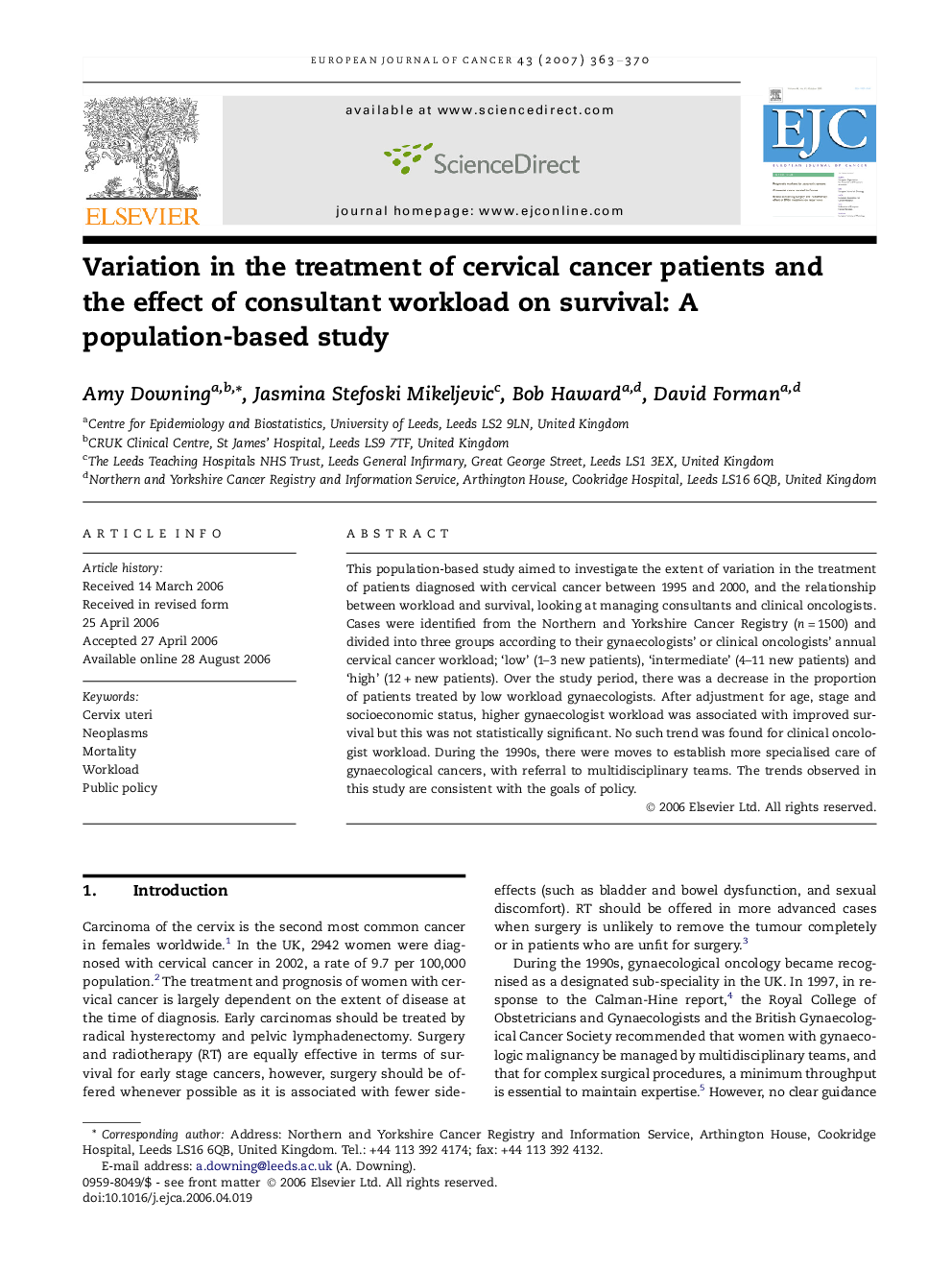| Article ID | Journal | Published Year | Pages | File Type |
|---|---|---|---|---|
| 2126256 | European Journal of Cancer | 2007 | 8 Pages |
Abstract
This population-based study aimed to investigate the extent of variation in the treatment of patients diagnosed with cervical cancer between 1995 and 2000, and the relationship between workload and survival, looking at managing consultants and clinical oncologists. Cases were identified from the Northern and Yorkshire Cancer Registry (n = 1500) and divided into three groups according to their gynaecologists' or clinical oncologists' annual cervical cancer workload; 'low' (1-3 new patients), 'intermediate' (4-11 new patients) and 'high' (12 + new patients). Over the study period, there was a decrease in the proportion of patients treated by low workload gynaecologists. After adjustment for age, stage and socioeconomic status, higher gynaecologist workload was associated with improved survival but this was not statistically significant. No such trend was found for clinical oncologist workload. During the 1990s, there were moves to establish more specialised care of gynaecological cancers, with referral to multidisciplinary teams. The trends observed in this study are consistent with the goals of policy.
Related Topics
Life Sciences
Biochemistry, Genetics and Molecular Biology
Cancer Research
Authors
Amy Downing, Jasmina Stefoski Mikeljevic, Bob Haward, David Forman,
